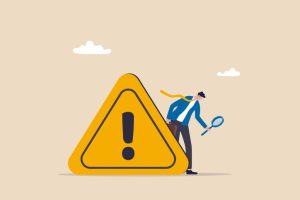 There are distinct pluses and minuses that small business owners should consider when looking for a loan.
There are distinct pluses and minuses that small business owners should consider when looking for a loan.
New small business owners typically enter the marketplace with high expectations — they want to build sales and increase profits quarter to quarter. More often than not, they hope to add employees and, perhaps, open up additional locations. To help turn their dreams of growth into reality, they often seek out financing.
The big question is when to borrow money and on what terms. The decision isn’t always clear-cut, as there are distinct pluses and minuses that small business owners should consider.
The Pluses of Business Borrowing…
Seeking financing can make sense from a business perspective if the loan is intended to help the business expand and grow. For example, using debt to add to or introduce a new line of products, acquire additional property, or take other actions that are expected to boost revenues is an appropriate business strategy. A loan can also make sense when it is used to repay the owner of the business some of what he or she put into the business using personal funds.
…And the Minuses
A business loan impacts cash flow as it is being repaid, often in monthly installments. The interest cost may be an important consideration, depending on the interest rate environment. Business borrowers should understand that their tax deduction for interest expense may be limited to 30% of the business’s adjusted taxable income. However, smaller businesses may be permitted to deduct more. A tax professional can provide details on these rules.
Excessive Debt
Business owners also need to consider other possible negative ramifications from taking on excessive debt. For example, the owner of a small business is typically required to personally guarantee loans to the business. If the business defaults on the loan, then the owner is personally liable for repaying the loan balance. It is possible that in such a situation, the lender would take steps to seize the owner’s auto, home, and other assets in order to settle the debt. Moreover, if the business ended up with more liabilities than assets and was unable to repay what it owed, then the business might be forced to file for bankruptcy.
Seek Professional Input
Before taking on debt, small business owners may want to consult with an experienced financial professional. A professional analysis of the business’s financial health, cash flow, and prospects can help the owner determine whether a business loan at this stage makes sense and how much debt the business can afford to take on.
 Running a small business isn’t easy. You probably wouldn’t have it any other way. The ability to survive and thrive is a source of great pride for small business owners. So when a competitor moves in, especially a big one, it can feel like battle lines have been drawn.
Running a small business isn’t easy. You probably wouldn’t have it any other way. The ability to survive and thrive is a source of great pride for small business owners. So when a competitor moves in, especially a big one, it can feel like battle lines have been drawn. Fire, floods, hurricanes, earthquakes. When they happen, they can destroy buildings, equipment, and hard-to-replace data, and even injure or kill employees. It can take a business weeks, sometimes months, to resume operations after a disaster. Some businesses never recover. You can’t pin down the time or day when a disaster may strike your business. However, you can certainly prepare for one. Preparing for a disaster can minimize the potential damage and may protect you and your employees from harm.
Fire, floods, hurricanes, earthquakes. When they happen, they can destroy buildings, equipment, and hard-to-replace data, and even injure or kill employees. It can take a business weeks, sometimes months, to resume operations after a disaster. Some businesses never recover. You can’t pin down the time or day when a disaster may strike your business. However, you can certainly prepare for one. Preparing for a disaster can minimize the potential damage and may protect you and your employees from harm. Whether or not the number of people working from office buildings returns to pre-COVID levels, one thing appears certain: Remote and hybrid work models are here to stay. Business owners and other managers who rely on individuals who are working remotely full- or part-time are refining and elevating their management skills so that they get the best out of their employees.
Whether or not the number of people working from office buildings returns to pre-COVID levels, one thing appears certain: Remote and hybrid work models are here to stay. Business owners and other managers who rely on individuals who are working remotely full- or part-time are refining and elevating their management skills so that they get the best out of their employees. Like many small business owners, you may plan on working until you are ready to retire. And, once you reach that point, you may expect to sell your business and live off the proceeds. Or, you may have partners or children who can keep the business operating once you are ready to step away.
Like many small business owners, you may plan on working until you are ready to retire. And, once you reach that point, you may expect to sell your business and live off the proceeds. Or, you may have partners or children who can keep the business operating once you are ready to step away. Of the more than thirty-four million Americans age 55 and older who were employed in 2020, over nine million were individuals age 65 and older.* People continue working past the traditional retirement age for a variety of reasons. Some actually enjoy what they do for a living. Their work gives meaning to their lives and helps fill their days, and they appreciate the company of coworkers. Others have to work since they cannot afford to retire. And there are other people who choose to continue working because of employer-provided benefits or because they want extra time to build up their retirement savings.
Of the more than thirty-four million Americans age 55 and older who were employed in 2020, over nine million were individuals age 65 and older.* People continue working past the traditional retirement age for a variety of reasons. Some actually enjoy what they do for a living. Their work gives meaning to their lives and helps fill their days, and they appreciate the company of coworkers. Others have to work since they cannot afford to retire. And there are other people who choose to continue working because of employer-provided benefits or because they want extra time to build up their retirement savings.